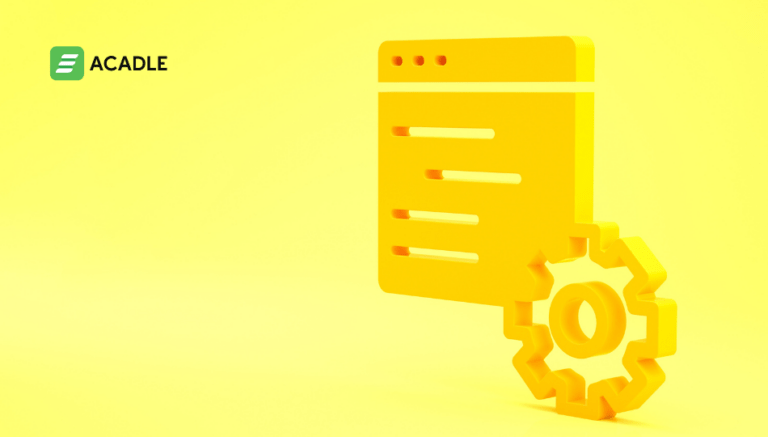In the realm of Human Capital Management (HCM), the ability to measure learning outcomes is paramount for assessing the effectiveness of training programs, enhancing employee performance, and driving organizational success. As organizations strive for excellence in managing their human resources,
understanding and leveraging the measurement of it has become essential. In this comprehensive exploration, we delve into the intricacies of measuring it in HCM, uncovering strategies, challenges, and best practices for achieving excellence.
Understanding Learning Outcomes in HCM Excellence
Learning outcomes in HCM Excellence refer to the knowledge, skills, competencies, and behaviors that employees acquire as a result of participating in training and development initiatives. These outcomes are measurable indicators of the impact of learning interventions on individual and organizational performance.
By clearly defining it at the outset of a training program, organizations can set expectations, track progress, and evaluate the effectiveness of their investments in employee development.
Learning outcomes in Human Capital Management or HCM Excellence refer to the tangible results and benefits that employees gain from participating in training and development activities. These outcomes encompass the knowledge, skills, competencies, and behaviors that individuals acquire or improve as a result of their learning experiences.
In the context of HCM, lt serve as measurable indicators of the effectiveness of training programs and their impact on both individual and organizational performance.
Key aspects of learning outcomes in HCM Excellence include:
- Knowledge Acquisition: Learning outcomes often involve the acquisition of new knowledge or information relevant to an employee’s role or responsibilities. This may include understanding industry best practices, organizational policies and procedures, or specific technical skills required to perform job tasks effectively.
- Skill Development: Learning outcomes also encompass the development of practical skills and competencies that enable employees to perform their job duties more effectively. These skills may include communication, leadership, problem-solving, teamwork, and technical proficiency, among others.
- Behavioral Changes: Beyond knowledge and skills, learning outcomes in HCM Excellence also focus on driving behavioral changes and performance improvements among employees. This may involve adopting new work habits, attitudes, or approaches to tasks and challenges, leading to increased productivity, efficiency, and effectiveness in the workplace.
- Career Advancement: Learning outcomes can also contribute to employees’ professional growth and career advancement within the organization. By acquiring new skills, expanding their knowledge base, and demonstrating competency in their roles, employees may become better positioned to pursue opportunities for promotion, advancement, and career development.
In summary, learning outcomes in HCM Excellence encompass a broad range of outcomes, including knowledge acquisition, skill development, behavioral changes, and career advancement. By clearly defining and measuring these outcomes, organizations can assess the impact of their training programs, identify areas for improvement, and align learning initiatives with strategic business objectives. Ultimately,
understanding and leveraging it in HCM Excellence is essential for driving employee development, enhancing organizational performance, and achieving success in today’s competitive business environment.
The Importance of Measurement
Effective measurement of learning outcomes is essential for several reasons. Firstly, it provides valuable insights into the return on investment (ROI) of training programs, allowing organizations to assess the impact of their efforts on employee performance and organizational goals.
Secondly, it enables organizations to identify areas of strength and improvement in their training initiatives, guiding future decision-making and resource allocation. Finally, it supports a culture of accountability and continuous improvement, where learning and development efforts are evaluated based on tangible outcomes and results.
Challenges in Measurement
Despite its importance, measuring learning outcomes in HCM Excellence can be challenging due to various factors. One common challenge is the alignment of it with organizational goals and objectives. Ensuring that training programs address specific skill gaps and support strategic priorities is essential for demonstrating their value to the organization.
Additionally, measuring the impact of soft skills development, such as leadership and communication, can be subjective and complex. Overcoming these challenges requires careful planning, collaboration between HR and business leaders, and the use of appropriate measurement tools and methodologies.
Strategies for Effective Measurement
To overcome the challenges associated with measuring learning outcomes in HCM Excellence, organizations can implement several strategies:
- Clear and Measurable Objectives: Start by defining clear and measurable learning objectives that align with organizational goals. This ensures that training programs are targeted and focused on addressing specific skill gaps or performance needs.
- Use of Assessment Tools: Employ a variety of assessment tools, such as pre-and post-training assessments, performance evaluations, and competency-based assessments, to measure it objectively and comprehensively.
- Data Analysis and Reporting: Collect and analyze data on learning outcomes using robust analytics tools and reporting mechanisms. This allows organizations to track progress, identify trends, and make data-driven decisions about the effectiveness of their training programs.
- Feedback and Evaluation: Solicit feedback from participants and stakeholders to gather insights into the impact of training programs on job performance and satisfaction. Use this feedback to make improvements and adjustments to future initiatives.
- Continuous Monitoring and Improvement: Establish a process for continuous monitoring and evaluation of learning outcomes, ensuring that training programs remain relevant, effective, and aligned with evolving business needs.
Leveraging Acadle for Learning Outcomes Measurement
Acadle, a leading provider of learning management solutions, offers a range of features and capabilities to support the measurement of learning outcomes in HCM Excellence. With its robust analytics and reporting tools, Acadle enables organizations to track and analyze learning data in real-time, gaining valuable insights into the impact of training programs on employee performance and organizational goals. Additionally,
Acadle’s customizable assessment tools and competency-based learning modules allow organizations to tailor their training initiatives specifically, ensuring alignment with strategic objectives and priorities.
Conclusion: Driving Excellence with Acadle
In conclusion, the measurement of learning outcomes plays a pivotal role in achieving excellence in Human Capital Management. By effectively measuring and evaluating the impact of training programs on employee performance and organizational success, organizations can optimize their investments in employee development and drive continuous improvement.
As organizations navigate the complexities of their measurement, partnering with a trusted provider like Acadle can provide invaluable support and guidance. With Acadle’s innovative solutions and expertise in learning management, organizations can unlock the full potential of their human capital and achieve HCM Excellence.


